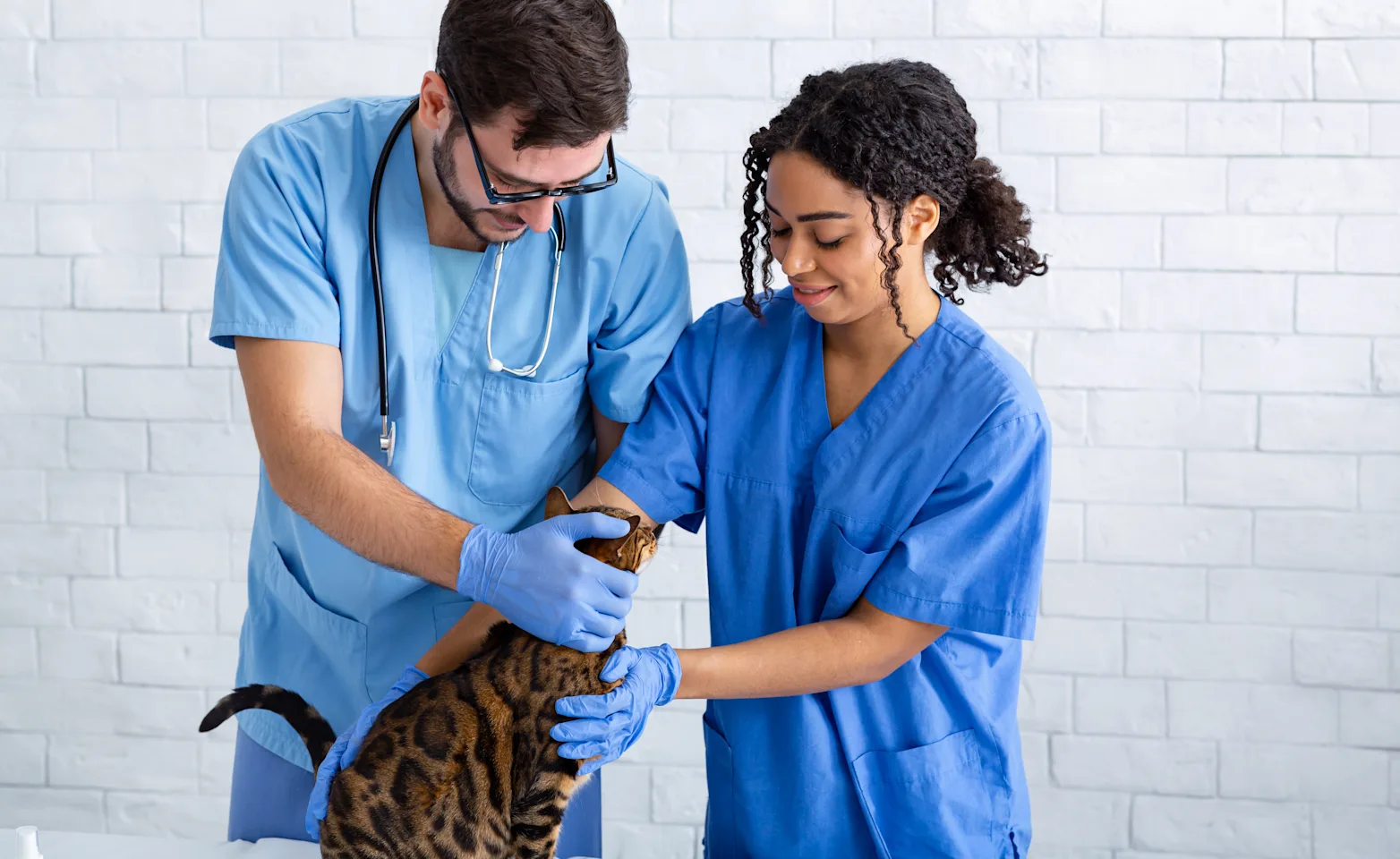Sherwood Veterinary Clinic

We understand that emergencies can happen at any time.
Sherwood Veterinary Clinic is open 7 days a week just for that reason. Our amazing team has even been known to stay late and continue treatment of severely ill patients during their personal time to ensure proper care. However, there are cases where a specialist or 24-hour care facility is required for your pet. If it is in the pet's best interest, we may refer you to a specialized facility. First and foremost, our concern is always doing what is best for the pet. Always.
Common Emergencies:
Anaphylaxis
Any Eye Injury
Bites Wounds
Bleeding
Bloody Vomit or Diarrhea
Broken Bones
Burns
Choking or Difficulty Breathing
Convulsions or Seizures
Diabetic Crisis
Difficulty Birthing
Head or Neck Trauma
Heat Stroke
Hit By Car/ Severe Trauma
Inappetence for 24 Hours or More (Cats)
Ingestion of a Foreign Item
Not Passing Urine
Open Mouth Breathing (in Cats)
Poisoning
Repeated Vomiting or Diarrhea
Unconsciousness or Collapse
Unresponsiveness
Wounds
What to do in an Emergency Situation
An emergency situation is scary and stressful - not only for you, but for your pet as well. The best thing you can do for you and your pet is remain calm because you are your pets first-responder.
First, you need to call the clinic. We will guide you through what to do next including how to arrive here safely. If possible, a second set of hands can be a big help so try and get a second person to help such as a friend, a relative, or even a neighbour. A second person is especially great if you have a large dog or your pet needs pressure to be maintained on a wound site. They can also be helpful for keeping an eye on the pet during travel or just being there to support you.
Now that the clinic knows you are on your way, the nest step is to get everything together. You need to get keys, wallet, licence, phone, a carrier or a leash, and blankets. After gathering all of that and getting it in the car, you can now prepare to move your pet. In order to decrease the stress and potential for further harm to the pet, the least movement is best. It's important to remember to drive carefully. You don't want to be pulled over for a speeding ticket or get in a car accident - neither will help you or your pet. Safety should always come first.
The first thing that will happen when you arrive at the clinic is you will be ushered into a room for immediate assessment. Here, information is key. We want to know about the how, the when, and how long. Additionally, any other information you can give us helps to determine the specific needs for your situation. The more information we have about a situation or your pet, the better we can determine a treatment plan, so please, don't be afraid to share. Please do not be afraid to share the information - we are not the police and we do not judge. Our only job is to make sure that your pet gets the medical care they need in a timely manner.
Fatal Mistakes in an Emergency Situation
When emergency situations arise, most of us are unprepared, and because of that, often mistakes are made. These can often become incredibly dangerous to our pets.
Waiting Too Long
'If he's still sick in a few days I'll call the vet'
'It really wasn't that much chocolate'
'I thought he would be fine'
'It should get better on its own'
These are all things that we have told ourselves. Unfortunately, these little white lies we tell ourselves can be fatal to our pets.
Since our pets are both predators and prey their natural instinct is to hide signs of illness or injury, appearing not to seem weak. We cannot compare them to ourselves when we are sick. Their signs and symptoms are not only more subtle then ours, but the manners in which they present pain are much different.
The best thing you can do for your pet is to contact your veterinarian as soon as you recognize or notice your pet acting abnormally. The most common complaint owners have when they come in is that he 'hasn't been himself'. In reality, behaviour changes are often the most reliable indication of a much larger problem.
For example, in deep-chested breeds such as Great Danes or Saint Bernard’s, there is a fatal condition called Gastric Dilatation Volvulus - or GDV. Symptoms include restlessness after a large meal, lethargy, and unsuccessful vomiting or gagging. While these may not seem like emergency symptoms, they are indicators that GDV may have occurred. By the time the pet is brought in the following day, internal damage has progressed, and our prognosis is poor. If this condition is caught quickly, corrective life-saving surgery can be performed.
Another frequent situation we have come across is ingestion of harmful and toxic substances. What people don't know is that a toxin must be evacuated from the body within 2 hours of ingestion. After that, absorption of the toxin has already began and damage to the organs has already started. At this point, we cannot induce vomiting with the expectation of completely removing the damaging factor. In the first situation where the pet received immediate care, we would be able to send home supportive medication that same night. Alternatively, if your pet is left too long with the toxin in its system, they would need to be transferred to a specialty facility offering 24 hour attended care for extensive IV fluid administration and close observation and costly rounds of blood work.
Induce Vomiting at Home
DO NOT TRY THIS AT HOME. We've all seen this statement on TV, and it applies here perfectly. There is no safe way to induce vomiting at home.
Puppies are, well, puppies. They often get into things they shouldn't. While it is a good idea to pet proof your house, there is no possible way to prepare for every scenario. We have all seen the 'online remedy' for inducing vomiting with hydrogen peroxide. For many years veterinary professionals did not have access to the proper equipment and medicine to perform this act safely. Unfortunately, it became a case of which would do more damage - the toxin or the hydrogen peroxide? While we have thankfully moved forward, this practice lives on in memories and therefore used without the knowledge of the risks it truly carries. If hydrogen peroxide is given incorrectly it can cause esophagitis and gastritis or even create ulcers and burns along your pets gastrointestinal (GI) tract. In rare but severe cases it can even cause peroxide-induced brain inflammation.
Assuming you were able to give your pet hydrogen peroxide and do so at an appropriate dose, there are still risks. Your pet could aspirate during vomiting or you could induce vomiting in a case where it is more dangerous to do so. There are certain items that can cause further damage if vomiting is induced. A few examples of this may included certain chemicals, toys or string. In certain cases, you can’t be certain that everything came out with vomiting and radiographs may be necessary to ensure the item is completely gone.
Not Calling the Clinic
When an emergency happens your mind starts running a mile minute, and sometimes we miss the most important thing we can do for our pets - calling your veterinarian. Not only can we give you life saving information and safety tips to help you better prepare for the travel here, but we can help guide you in a way that ensures your pet makes it here safely. If necessary, we can even instruct you over the phone how to perform certain tasks or procedures that will help stabilize your pet so that they can be transported to the clinic. In severe cases we may even need to direct you to a specialty facility or a clinic that is closer if it is in your pets best interest.
This also is important to be sure that we are prepared. If you walk in with an emergency and our vet is at a house call or in surgery you will lose precious time that your pet could be getting treatment during. Letting us know you are coming down means that we can prepare our staff an the clinic for the situation so that, from the moment you arrive, all hands are on deck and treatment can begin immediately.
